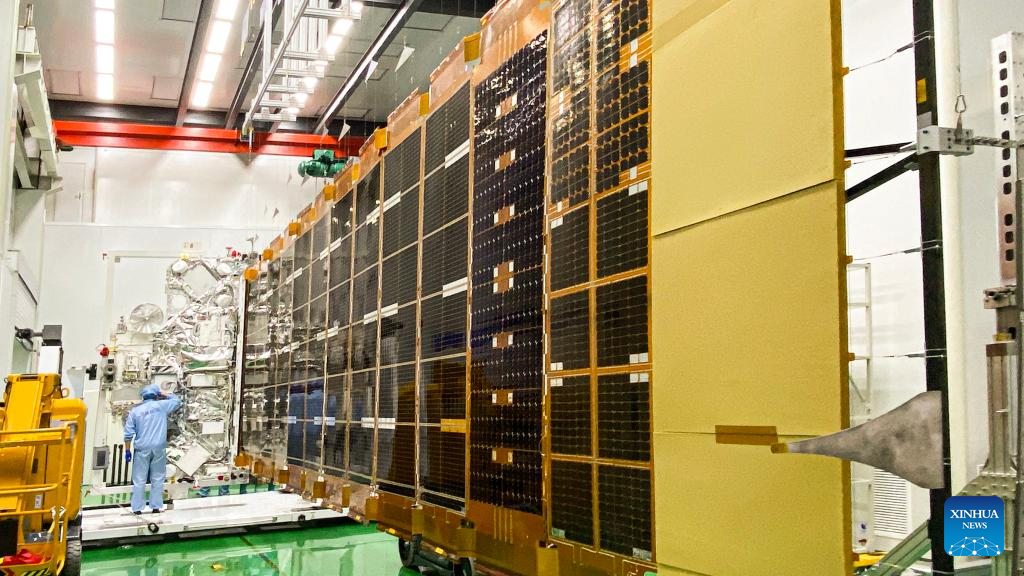25.07.2023

This photo taken on May 29, 2023 shows the unfolded flexible solar wing of Lingxi-03 satellite. (GalaxySpace/Handout via Xinhua)
A Chinese commercial space company on Sunday launched a Long March-2D rocket, placing the Lingxi-03 satellite into preset orbit.
The satellite, developed by the Chinese commercial space company, GalaxySpace, is the first of its kind in the country equipped with a flexible solar wing whose single-layer flexible solar panel is only approximately 1 mm in thickness. When folded in the rocket, the wing's main body is less than 5 cm in thickness, while it is about 9 meters long and over 2.5 meters wide when working in orbit.
Featuring small size, light weight and modularization, the flexible solar wing is capable of absorbing more solar energy and suitable for large-scale stackable satellite launches, which is of great significance for accelerating the construction of a satellite internet constellation.
The satellite is equipped with a millimeter-wave multi-beam digital payload with a capacity of tens of gigabits per second, which is used to verify next generation low-orbit broadband satellite communications, ultra-large energy systems, active thermal control, integrated die-casting structures, stackable multi-satellite release and other technologies.
This is the first time that China has verified stackable multi-satellite launch technology in orbit and it will provide technical support for the rapid deployment of China's large-scale low-orbit communication satellite constellation.
The satellite will mainly serve to provide low-orbit broadband communications. The digital payload of the satellite is an intelligent "brain" installed on the satellite, enabling the satellite to flexibly allocate its communications resources, and automatically perform operations and beam allocation according to business requirements.
It is also China's first satellite featuring an integrated main body structure. The integrated die-casting technology makes it more suitable for mass production.
The satellite employs an open-frame design, which means that subsystem equipment is directly exposed to the space environment without protective coverings. This requires outstanding performance in terms of the protection capacity of satellite electronic products and temperature control, given direct exposure to the harsh space environment.
Therefore, the satellite is equipped with an active thermal control fluid circuit, which is equivalent to installing an "air conditioner" for the satellite to work at a suitable temperature.
Through cooperative modes such as joint design and development, the company has introduced a number of suppliers who had no previous experience in the aerospace industry, giving full play to the advantages of the country's mature industrial system.
The company will accelerate the batch development of flat-panel stackable satellites, and tackle core technologies such as phased array antennas for direct satellite-to-device communications and digital processing payloads, said Zhu Zhengxian, chief technology officer (CTO) of GalaxySpace.
The CTO added that the company is looking forward to joining hands with partners along the industrial chain for rapid construction of a satellite internet constellation.
Quelle: Xinhua

